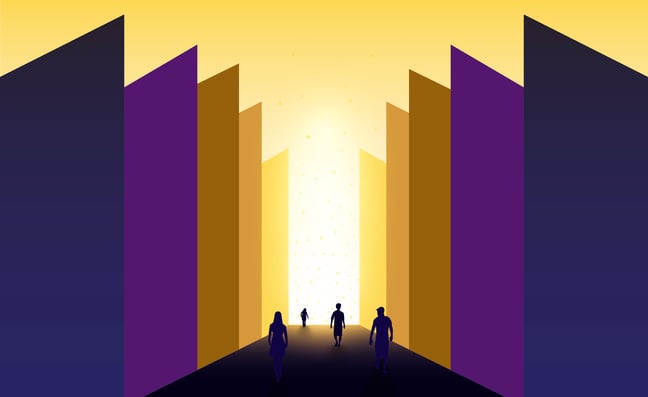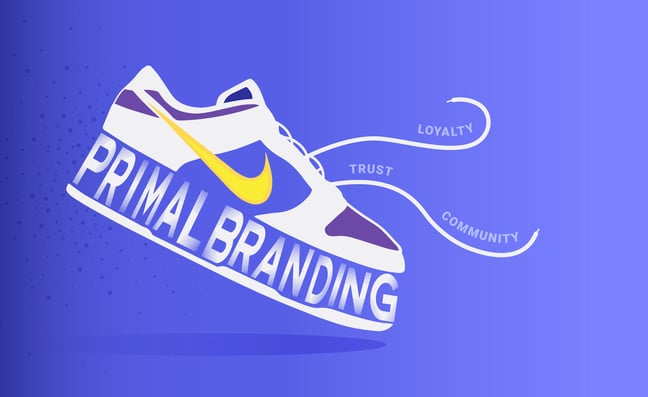Ever walk into a room and feel like you could put your finger on its pulse? There is a vibrational frequency that applies to the symphonic structure of a collective that is in alignment. When thoughts, feelings, and energies align, there is a synchronization that happens and this is what we call collective consciousness.
Think of the last great concert you went to, everyone is united by a common love of the artist, people bound together by like-emotion. It is an experience made manifest by the community of the event. Brands thrive in these synchronicities, too. Strong brands don’t just make an impact, they’re able to build a tribe, a community—they become a living breathing thing.
What is it that holds a strong brand together? The answer can be found in collective consciousness. The same fibers that make strong brands are forged from the neural network of society. The “it” factor in branding is when you don’t just foster community, but you are a community. Maybe you can’t see it, but you can certainly feel it. There is energy and you are drawn to it. And just like any other community you contribute, you are sustained, you help grow. As humans, it is a basic need: to belong, to be familiar, to run with our tribe. Successful branding is about the primal nature of it all. Collective consciousness might sound crunchy, but it is WHY branding works.

With the biggest commodity in the world now being information, when you get the attention of the greatest number of people who agree on the same information, you create a collective consciousness.
This collective network of consciousness (or unconsciousness) determines how everyone accepts—and thus creates—reality. But in truth, it is only a perception of reality. That’s how conventional beliefs are created.
—Joe Dispenza
Why Collective Consciousness Isn’t As Crunchy As It Sounds
One of the most pronounced voices in Sociology, Emile Durkeim, is credited with bringing forward the idea of collective conscience. For him, this term was the common thread that held society together and allowed it to function in an organized way. Durkeim defined it as “the totality of beliefs and sentiments common to the average citizens of the same society.” (Durkeim, 1893). He developed this idea of a “non-material social fact.” Something intangible, without an address or physicality that existed mostly in the mind, or rather in the consciousness. Maybe in the late 1800s, Durkheim didn’t know his contributions to sociological study would ring so powerful and true in this digital age, where powerful brands have accessed this realm.
Take BMW. Yes, it’s the car and most definitely the German engineering. But, it is also the feeling you get slipping into 6th gear or taking a seamless turn. It is the embodiment of class and status as your key fob sways and you slide into the driver's seat. Sure it is tied to a physical thing, but the essence of a BMW and goliath brands of the like aren’t just the shiny things we look at, it’s the way the shiny things make us feel—collectively. Brand identity is inextricably linked to the customer experience and when they sing, this is the sweet spot of effective branding and lifelong customer retention.
The Power of Collective Consciousness Beliefs
After Hurricane Katrina, the city of New Orleans rose. The resurrection of the community out of arguably the biggest natural disaster to hit the city is credited to the community of the people of New Orleans. The Saints are such a big part of the spirit of the city. Games were a place where pride and sense of community could be seen and felt. It put a place to the feeling. The fleur-de-lis brand of the NFL team is an example of how something fans wear with pride represents more than a football team, it is loyalty, it is citizenship, it is local pride, and strength. It is unifying, it means a stranger in the airport wearing a Saints hat is an instant friend. Collective consciousness was the reason that the Saints didn’t just win the Superbowl, the city of New Orleans, was back. A home isn’t just four walls which can be leveled on a fateful day by gale force winds. A home is the battle cry: “Who Dat said they gonna beat them Saints.”

The concept of collective consciousness comes to form when you’re physically in the stadium, what you can feel in the stadium even if you’re not a Saint’s fan is something magical, almost inexplicable. It almost forces your brain to get in the same frequency as everyone else, it’s almost uncontrollable. The best brands create environments and mechanisms to draw on this to put people together.
The Primal Nature of Branding
I think it's getting more into this idea of community. I think it's getting more into this idea of tribes. I think it's getting into brand loyalty. I think it's getting into a kind of emotional evocation—like what gets evoked when you think of brands. I would say that there are a lot of ancillary and direct ties to the Idea of Brand Development and Brand Development Services. What we're talking about with collective consciousness, is how you make people become lifelong believers.
—Brian Sena
Primal Branding is at the heart of brands that are built to stand the test of time. The likes of Apple and Nike, are brands that provide vital functions in consumer biology. The iPhone is even touted as being an extra appendage. What made it such a success? Well certainly that is not something I can distill here in 1,200 words or less, but what is undeniable is that Apple as a brand fulfills the human need for connection. Branding built on tapping into the very essence of humanity is primal.

Nike is an example of the importance of a strong mission and vision when aligning brand messaging with collective consciousness beliefs. Nike's Mission: "Bring inspiration and innovation to every athlete* in the world."
We all want to believe in our own power. Using famous athletes and their inspiring words evokes emotion. Emotion evokes connection. Serena Williams voicing over images of her sweating on a court and emanating sheer talent and drive speaks to so many communities: tennis players, tennis fans, young women, Black women. Groups of different sizes, groups underrepresented, groups who need voices and champions and heroes.
Brands like Nike are neither bound to a specific target audience nor sustained by the existing one. Rather brand strategy rejects the idea of an average customer, honors loyal customers, and constantly builds a base through strong brand message and brand trust. It is a net that casts wide and small. Branding that evokes emotion in this way is both inclusive and exclusive. In their mission statement, the asterisk* by athlete is accompanied by a footnote: "if you have a body, you're an athlete." That is how they reign supreme and speak to such vast audiences—the human collective. It is the ultimate customer lifetime value formula.
Join the Collective
Every time people interact with information, it produces changes in their biology. As they learn new information, we could say that this information becomes a part of their mind or consciousness. Research now shows that enough people sharing the same level of consciousness—a collective network of observers—actually determines reality.
—Joe Dispenza
Successful brands have their finger on the pulse of collective consciousness when they tap into this power of “non-material social fact.” They honor and foster the psychological impact of shared beliefs on individual behavior and decision-making. This strategy serves as compounding interest. Fostering collective consciousness beliefs builds brand loyalty which in turn strengthens and builds your collective. It's a marketing strategy that may seem like common sense, but it is actually science (according to Durkeim).
You might be reflecting on what you just read, mentally and emotionally connecting back to experiences you’ve had that you feel deeply connected to. This is not an easy concept for brands to be able to achieve and build within their DNA. However, there is a formula to tap into, which we’ve codified.
Connect with us if you want to become part of the conscious network of observers creating a new reality for branding. Ever Wonder? We certainly hope so.
Related posts
Food for thought.
%20(1).jpg)
Putting The Cart Before The Horse: Customer Feedback Vs Vision
by Gabriella Cane
.jpg)
.jpg)